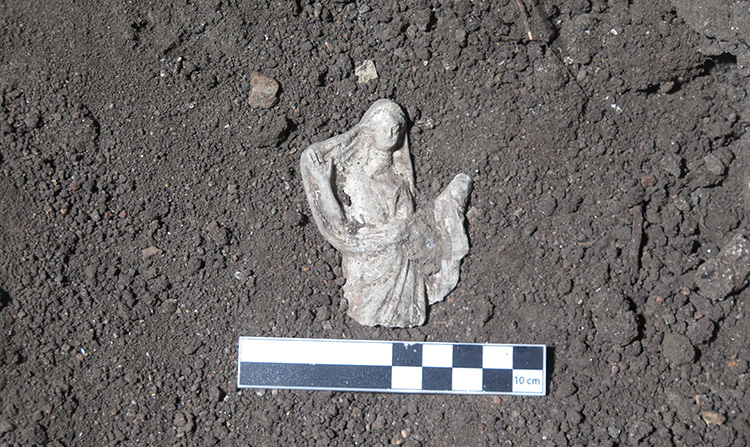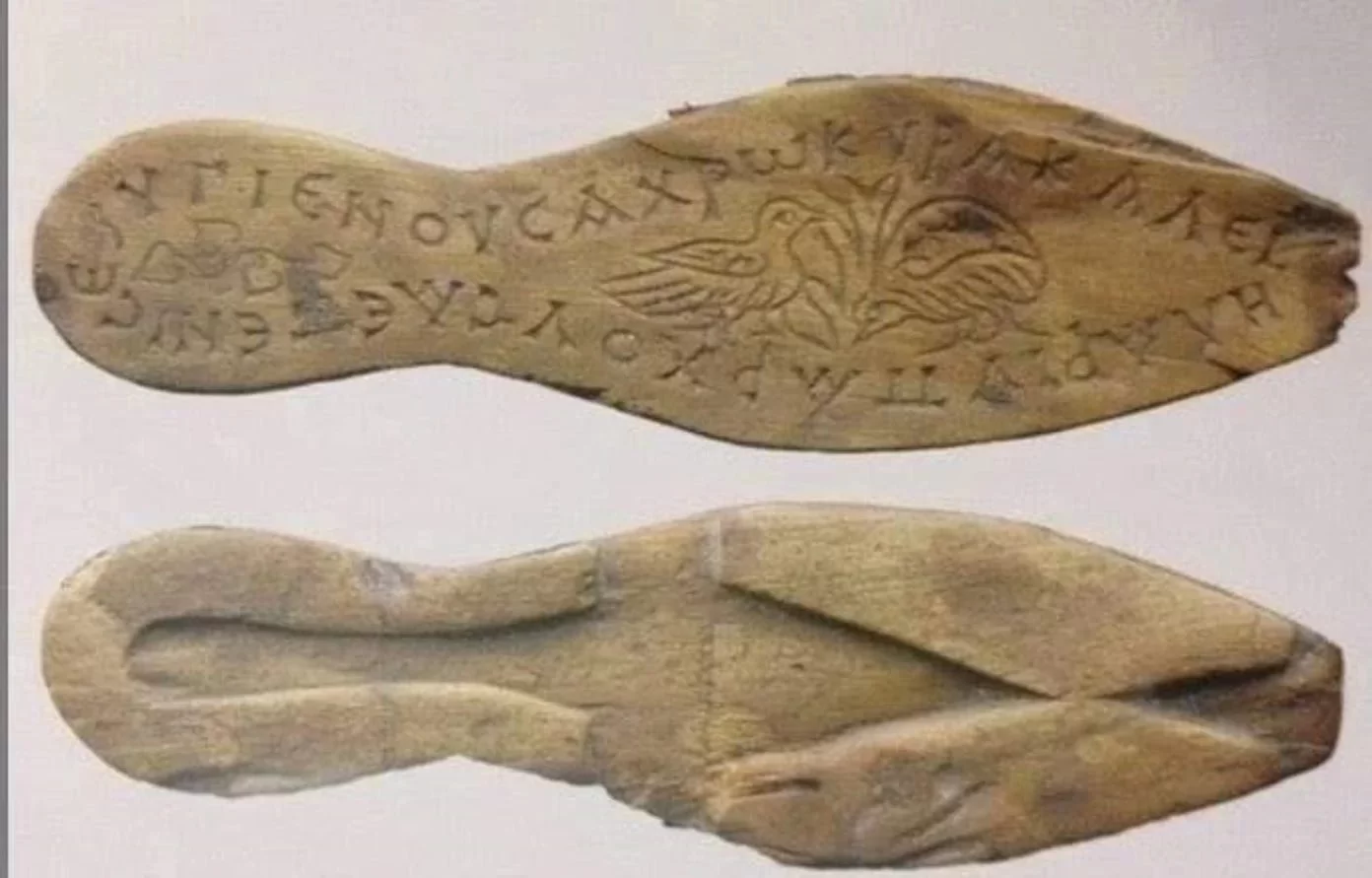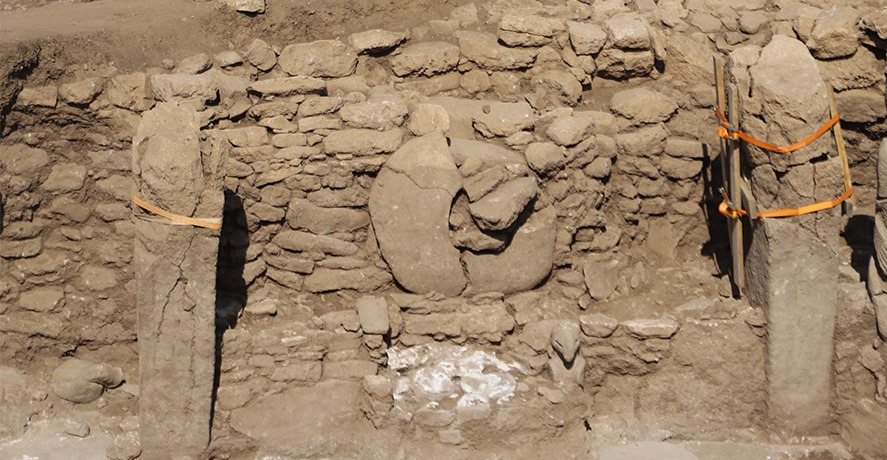
Demeter figurines were found in the ancient city of Aigai, the land of goats
During the excavation works at Aigai Ancient City, which derives its name from the Greek word ‘αίγα’ meaning goat, two statuettes depicting Demeter, known in Greek mythology as the goddess of earth and fertility, along with fragments of an embossed vase, were found in a cistern. Aigai is located near the Köseler neighborhood of Yunt

1,600-year-old woman’s sandal and comb found in the wreckage of the Theodosius Harbor
The 1,600-year-old sandal and comb unearthed during excavations at Theodosius Harbor (Portus Theodosiacus), the second largest port built on the shores of the Marmara Sea, captivate onlookers. Conducted concurrently with the construction of the Marmaray and metro projects aimed at addressing Istanbul’s transportation issues, the excavations resulted in the most comprehensive archaeological surface survey of

During the basic excavation, settlement dating back to the Roman and Hellenistic periods was discovered
A citizen in the northern Turkish city of Samsun, while excavating foundations for a residential construction, uncovered traces of a settlement that are considered to belong to the Hellenistic, Roman, and Eastern Roman periods. İlkadım district, Tepecik neighborhood, a citizen initiated excavation work on their own titled land to build a house. During the foundation

The 5000-year-old goddess figurine was found at Yassıtepe mound
A 10-centimeter goddess figurine made of baked clay, estimated to be 5000 years old, was found in the excavations of Yassıtepe mound (also known as Yeşilova mound). Yassıtepe mound, located within the boundaries of Kazım Dirik neighborhood in Bornova District, is situated in an area between Forum Bornova (a shopping mall), Manda Creek, and the

Kastabala Ancient City, the “Ephesus” of Çukurova, whose name is determined by an Aramaic inscription
Kastabala, located about 12 kilometers north of the city center of Osmaniye in the southern region of Türkiye, is an ancient city with a history dating back approximately 2,000 years. Kastabala, situated to the northwest of the Ceyhan River, often referred to as the “Ephesus of Çukurova.” The Kastabala archaeological site is situated at the

A 14,500-year-old offering pit found in the Gedikkaya Cave
In the rescue excavation conducted in Gedikkaya Cave in the İnhisar district of Bilecik, a 14,500-year-old offering pit was discovered. Traces of life were found in two sections of Gedikkaya Cave, both upper and lower. The rescue excavations are being carried out under the scientific guidance of Assoc. Prof. Dr. Deniz Sarı from the Department

A 1,700-year-old trident was found in the ancient city of Assos
In the ancient Aegean coastal resort town of Assos in northwestern Türkiye, a trident believed to date back to the 3rd or 4th century AD and thought to have been used for fishing has been discovered. The artifact was unearthed by archaeologists excavating the ornate fountain known as the Nymphaion (eastern fountain) located to the

Who will solve the puzzle of the Bronze Age tin?
The origin of the tin used to make Bronze Age swords, helmets, bracelets, plates, and pitchers has been a topic of discussion among experts for 150 years. Discovering the sources of tin can provide extensive insights into early trade relations between Central Asia, Mesopotamia, North Africa, the Levant, and Europe, and thus shed light on

A painted, wild boar sculpture discovered at Göbeklitepe
Exciting discoveries have been made at Göbeklitepe and Karahantepe, often referred to as the “zero point” of history. In Göbeklitepe, a life-sized sculpture of a wild boar was unearthed. As part of the Taş Tepeler project, which sheds light on prehistory and has seen highly significant discoveries on a global scale, the archaeological excavations carried

Archaeologists have discovered a horse skeleton with a bronze curb bit in its jaw at the Çavuştepe excavations
A horse skeleton with a bronze curb bit (a metal piece inserted into its mouth to guide the mount) was found in the Çavuştepe castle belonging to the Urartians who ruled in the Eastern Anatolia Region. Çavuştepe Castle was constructed by Urartian King Sarduri II. in 750 BC. The ongoing excavations at Çavuştepe Castle and
